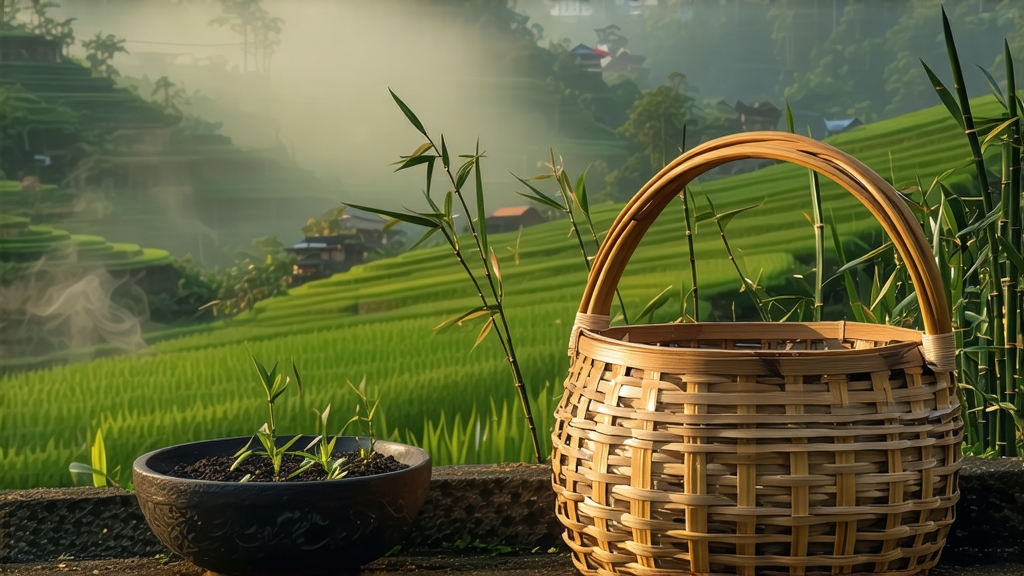
Tucked high on the northern rim of the Sichuan Basin, where humid clouds from the Yangtze collide with the cold air of the Tibetan Plateau, lies the mist-veiled Meng Ding Mountain. For twelve centuries its name has been whispered among Chinese tea connoisseurs as the birthplace of the world’s first cultivated tea garden, and today it remains the spiritual home of Meng Ding Huang Ya—Meng Ding Yellow Bud—an endangered yellow tea whose mellow sweetness once graced the cups of Tang-dynasty emperors.
Historical whispers
Legend places the planting of tea on Meng Ding in 53 BCE, when the Daoist adept Wu Lizhen is said to have transplanted seven wild tea bushes onto the summit. By the Tang dynasty (618-907) the tender buds were compressed into cakes and carried along the Silk Road, while Song-era (960-1279) tribute lists specify “Meng Mountain sweet buds” delivered to the capital in small silver caskets. The explicit mention of huang ya—yellow bud—appears in Ming gazetteers (1368-1644), describing a tea that was deliberately kept slightly moist so the leaf “fermented to the colour of golden maize.” When Qing emperors shifted their tribute preference to green tea, Meng Ding Huang Ya retreated into local monasteries, surviving only because monks valued its gentle qi and low astringency for meditation. Rediscovered during the 1959 National Tea Revival, it was classified one of China’s Ten Famous Teas, yet annual production remains below three tonnes, making authentic Meng Ding Huang Ya rarer than top-grade Da Hong Pao.
Micro-terroir
Meng Ding’s unique “cloud-cloak” climate delivers only 40 % of possible sunshine, forcing tea bushes to synthesise extra theanine and soluble sugars. The mountain’s Permian sandstone weathers into a loose, acidic loam rich in selenium and zinc, while diurnal temperature swings of 15 °C slow overnight respiration, locking fragrance inside the bud. Local cultivars—traditional Sichuan small-leaf and the recently selected Meng Ding #9—carry a recessive gene that lowers polyphenol oxidase activity, giving the leaf a natural creamy tone even before processing.
Plucking ritual
The harvest window opens for barely ten days around the Qingming festival (early April). Only the single unopened bud or the bud-with-incipient-leaf standard, no longer than 2.5 cm, is taken. Pickers climb 1,100 m before dawn so the leaves still carry mountain dew; any direct sunlight would accelerate enzymatic browning and ruin the subtle “yellowing” later. The plucked shoots are carried in shallow bamboo sieves lined with banana leaf to prevent compression, then wheeled by cable down to the valley workshop within two hours.
The secret men huang (闷黄) transformation
Yellow tea’s identity rests on one extra, almost invisible step inserted between green tea’s kill-green and shaping stages. At Meng Ding the sequence unfolds as follows:
- Sha Qing (Kill-green) – 180 °C drum roast for 3 min 20 s, just enough to inactivate 85 % of leaf enzymes while preserving 10 % moisture inside the bud.
- Re-moistening – the hot leaves are piled 5 cm deep under damp linen for 20 min; residual heat and humidity soften the cuticle.
- Primary rolling – a light 8-min roll to break surface cells without leaking juice, preparing the leaf for colour change.
- Men Huang (sealed yellowing) – the critical signature. The rolled leaf is wrapped in double layers of yellow kraft paper, then placed inside a bamboo chamber heated by charcoal embers at 38 °C and 75 % RH. Over 36 hours the bundle is opened every 6 hours to aerate; chlorophyll degrades into pheophytin, catechins dimerise, and a hay-like aroma drifts out. The leaf colour shifts from vivid jade to pale maize, while amino acids rise 18 %.
- Low-temperature drying – the “yellowed” buds are gently baked above embers at 60 °C for two hours, then rested for a day and rebaked at 50 °C until moisture reaches 5 %. The result is a needle-thin bud, downy and ivory-gold, smelling of sweet corn and orchid.
Brewing the summit in a cup
Water: spring or filtered, 85